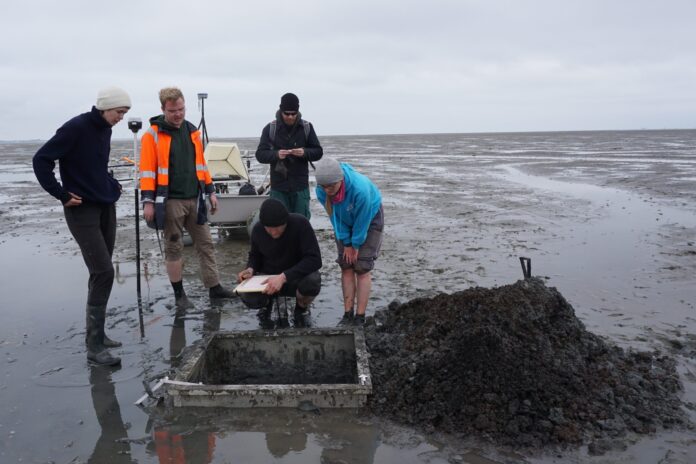The remains of a long-lost church submerged by floodwaters almost 700 years ago have been discovered by researchers.
The medieval church is thought to have once formed part of the medieval trading settlement of Rungholt, which has sometimes been referred to as the “Atlantis of the North Sea.”
The sunken settlement was reportedly submerged during a devastating storm surge in A.D. 1362. It lies just off the coast of modern-day Germany beneath the Wadden Sea—an intertidal zone in the southeastern part of the North Sea.
Extreme storm events during medieval and early modern times, particularly the one in A.D. 1362, caused major land losses in the area, turning cultivated marshland into tidal flats, according to a 2022 study published in the online journal PLOS One.
© Ruth Blankenfeldt
The exact location of Rungholt—and even its very existence—have long been the subject of debate. But now an interdisciplinary team of researchers say they have found evidence for a church that may have sat at the center of the medieval settlement.
The research team included experts from Kiel University, Johannes Gutenberg University of Mainz, the Center for Baltic and Scandinavian Archaeology and the State Archaeology Department of Schleswig-Holstein, which are all based in Germany.
To locate the church, the scientists used a combination of techniques to examine a stretch of mudflats in the Wadden Sea covering an area of almost 4 square miles. The survey included the area around the island of Hallig Südfall, where previous evidence has indicated Rungholt might be located.
“Settlement remains hidden under the mudflats are first localized and mapped over a wide area using various geophysical methods,” Dennis Wilken, a geophysicist at Kiel University, said in a statement.
This month, the team’s efforts revealed a 1.2-mile-long chain of medieval terps—artificial mounds constructed to protect urban areas from high tides and water surges—near Hallig Südfall.
Among the terps, the research team found structures that they determined to be the foundations of a large church measuring around 130 by 50 feet.
In total, the team found in the investigated area 54 terps, systematic drainage systems, a sea dike with a tidal gate harbor, two smaller churches and now the large church.
But despite the latest discovery, erosion poses a threat to the medieval remains that are dotted across the area, according to the archaeologists.
“Around Hallig Südfall and in other mudflats, the medieval settlement remains are already heavily eroded and often only detectable as negative imprints. This is also very evident around the church’s location, so we urgently need to intensify research here,” said Hanna Hadler in a statement. She is with the Johannes Gutenberg University of Mainz’s Institute of Geography.


